Q :
"... parallel processing would have no positive effect on performance, right?"
A :
Given the above defined context, the deduction was right.

Details matter, yet some general principles ( as a Rule of Thumb ) hold -- No matter how high or low is the "surrounding" ( background ) workload of the just-[CONCURRENT]-ly scheduled resources ( pure-[SERIAL], round-robin alike, serving the O/S queue-of-waiting threads ( ignoring for the moment slight imbalance, coming from a relative priority re-ordering ) for mapping threads onto different CPU-cores plus additional, forced hopping of active threads from one CPU-core to another CPU-core due to actual thermal-throttling reasons, thus introduced increased CacheLine "depleted" hit-rate, resulting in 3 orders of magnitude worse RAM-I/O, compared to in-Cache computing -- are just few performance degrading phenomena to account for in considering real-world limits for trying to go for maximum performance ) -- all this reduces the net-effect of idealised scheduling. Plus, it adds add-on overheads to handling any additional stream-of-execution, adding more overheads, than without doing so.
A simple, interactive GUI-tool will say more, than any amount of text on this subject. Just tweak the overhead fraction and first test for a full, 100%-parallel problem fraction ( which will never happen in real world, even the loading of the process itself into RAM is a pure-[SERIAL] part of the overall computing Problem-under-review, isn't it? ). Once seeing the the "costs" of growing overheads accumulated, move the p-fraction from full-100% to some 0.997, 0.998, 0.997 ... to see the Speedup impact of smaller p-fraction ( parallel / ( parallel + serial ) )
If interested in more hardware & software ( having the same dilemma ) details, feel free to use this & this & this:


